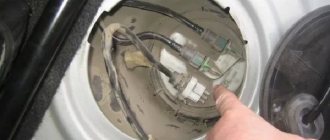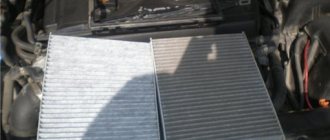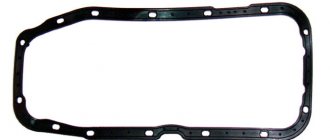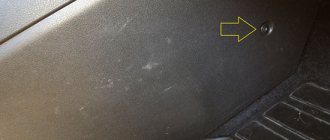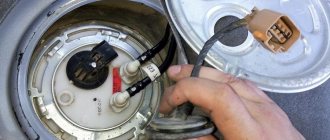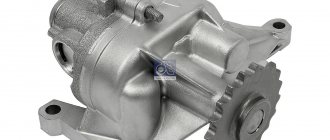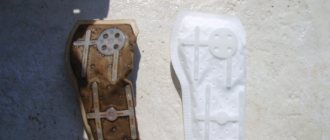Replacing the engine oil filter is one of the most important and required maintenance items for your vehicle. Whether you replace it yourself or at an authorized service center, regularly replacing this vehicle component is of utmost importance to keep your engine in top condition.
When and why should you change?
In modern high-performance engines, the old industry standard is every 5,000 km. not true. Every vehicle is different, but most manufacturers recommend 10-12k km intervals. or more. Your vehicle's owner's manual will give you recommendations on how often you should change your oil and filter.
To determine which part you need to change your oil filter, start by paying attention to your driving habits. If you drive around town frequently or make short trips, you may need to change your oil filter more often than those who mostly drive on the highway. Towing a trailer, driving in extreme temperatures or in the mountains may also require you to change the filter more frequently.
The key to upgrading the part is to replace the filter before it becomes clogged or too dirty, which can damage the engine. Replacing your oil filter with a high-quality replacement will help ensure engine longevity.
The purpose of an oil filter is to filter out engine contaminants, dirt, and carbon deposits from the engine oil that lubricates the internal components of a vehicle's engine. It stops dirt and contaminants and traps them inside so that they do not enter the engine, which can cause excessive internal wear, rupture and damage.
Reasons for the need to replace the filter device
Removing the old filter device
The need to change the oil filter without changing the oil arises in the following situations:
- The new oil filter turned out to be defective, and there were noticeable irregularities in the operation of the filter element. It is especially unpleasant when problems are discovered after installing a new filtration product on a car. In this case, there is a lubricant inside the engine that can be used for some time, but the filter must be changed.
- The moment to replace the engine fluid has already arrived, but it was not possible to get the necessary oil filter. For example, a filter has been ordered, but delivery is late (it is not possible to supply a duplicate product). After delivery of the new filter device, it will be necessary to install it on the machine, but there is no need to change the oil.
- Inattention. When changing the engine mixture, the mechanic forgot to replace the filter device.
We recommend: How to properly bleed the brakes of a car with ABS?
The main problem that arises when replacing the oil filter without changing the engine mixture is the possibility of a large amount of oil leaking out of the engine. Many car enthusiasts believe that when performing the above procedure, they will have to purchase a large volume of lubricant. This is a mistaken opinion; if the replacement procedure is done correctly, then you can get by with minimal losses of motor oil.
We recommend watching a video about the need to change the lubricant and oil filter:
Why does the oil filter need to be replaced regularly?
Over time, the oil filter gradually becomes more clogged as it traps billions of contaminants and carbon dust. A clogged filter reduces the amount of clean oil passing through it and therefore requires regular replacement.
The oil filter is a sealed metal unit, so you can't do a visual inspection to determine when it needs to be replaced. There are no devices, sensors or warning lights to remind you that it's time to change the filter. You won't even notice the impact a clogged or dirty oil filter has on your engine. The effects of a clogged or dirty filter may include some or all of the following:
- Lack of engine lubrication.
- Premature engine wear.
- Internal engine damage.
- Reduced oil pressure.
Even though your engine may be experiencing these problems internally, you won't realize it until it's too late and your engine is damaged. For proper operation of the engine, a huge amount of clean oil is required.
To protect against clogging, premium oil filters contain a bypass valve that regulates the pressure directly inside them. If the filter becomes completely clogged, this bypass valve will open and oil will continue to circulate through your engine. However, the oil will be dirty and "unfiltered".
How to remove the oil filter
Whenever you change the oil on your car, you also need to change the oil filter. It's a simple job, but you have to follow some simple rules. The location of the oil filter varies from vehicle to vehicle. It is often only accessible from below and may be protected by a tray that must first be removed. On some vehicles the filter is accessible from the top. If you are unsure of its exact location, consult your owner's manual.
Oil filters usually come in two types:
- replaceable, non-removable;
- collapsible with replaceable filter element.
Both perform the same function and work in the same way. Replacement oil filters should only be installed by hand, but not everyone heeds this advice. In most cases, it should be unscrewed by hand. Housings for dismountable filter elements have a screw-on lid. After removing the paper casing, simply lift it up. Be aware that if both filters are used, large amounts of oil may spill when removing them.
Oil filter housings almost always have a threaded cap and are removed using a large wrench (sometimes up to 36 mm). You can buy such a tool for a specific car model. But before you start draining the oil, make sure you have the right wrench! The worst-case scenario could result in the case cracking due to too much cap pressure or from brittleness associated with age of the components. Luckily, there are replacement housings available that are not too difficult to install. Make sure you unscrew it the right way - counterclockwise - and take a deep breath.
The process itself
How to change the oil filter when changing the lubricant in your car's engine? Let's look at this process step by step.
- For work, use a heated box or garage (especially in the cold season). Also remember that some parts may remain quite hot for a long time after you have turned off the engine. Then contact with them will lead to disastrous results, and possibly to burns. Therefore, it is necessary to let the car “cool down” after you have driven it onto a pit or a lift;
- You need to prepare in advance the oil that you will pour into the engine, the filter itself and a set of tools that may be useful to you;
- Of course, some craftsmen drain the oil without lifting the car, but simply by heavily jacking up one side of the front end. But, nevertheless, it is recommended to carry out this process either in a pit or on a lift in order to have good access to the bottom of the car;
- We climb under the bottom and find the oil drain plug
. We unscrew it and pour the old oil into a specially prepared container. Everything needs to be done as carefully as possible so as not to get caught in the stream of lubricant. We wait until all the oil runs out of the compartment. We remind you once again that the parts and the oil itself can be quite hot. So take care of your body parts. It is also necessary to handle the container where the oil is collected with the utmost care; - We unscrew the filter and clean the seat for it. Sometimes it can stick if the oil has not been changed for a long time. Some filters have a place where you can unscrew it using a wrench. And also - you can use the magic remedy WD-40 or something similar;
- After unscrewing the filter, throw it away. Be careful, residual lubricant may continue to drip out of the hole;
- Take the prepared new filter with gasket
. Apply a layer of lubricant to the gasket. We install the gasket on the base of the part, checking the reliability of the fastening. We begin to slowly screw the oil filter into the hole where it should be installed. Try not to damage the threads (especially for used cars if you recently purchased and are trying to change the oil). When the filter touches the gasket, you need to stop. After which, make another full turn for final fastening.
As already mentioned, some similar spare parts have a special nut at the top of the body, with which you can “tighten” the filter
However, the most important thing here is not to overdo it when making the last revolutions. Next, remove the bucket (or container) with old oil from under the bottom. It can, in principle, be recycled or used for lubrication
But many simply pour it out. We lower the car onto its wheels. We fill in new oil to the required level. Try not to overfill. Then you can add more, if necessary, if it goes away. Here, try to choose in advance the type and marking that is most suitable for your pet’s engine.
Close the lid and hood
. We start the car engine and let it run for a while. It will be better if you drive to a clean place (or you can put paper under the bottom) and turn the engine for about 10 minutes. After that, drive away a few meters, and on the spread newspapers it will be clearly visible whether there is a leak. A couple of drops does not count - these may be residual effects. Then we turn off the engine and check the oil level (add it if necessary). Now the question of how to change the oil filter and engine lubrication is considered closed. But keep an eye on the oil level for a few more days: it may change.
How to unscrew the oil filter if it is stuck
Better grip on oil filters that don't just unscrew can be achieved using a strip of coarse sandpaper and a wrench. Or just buy a special wrench with a wide grip. You can find a special wrench designed to unscrew oil filters.
Here are the main types of such special tools:
- Plier-shaped wrench (special puller, works like pliers).
- Cup type key (be sure to specify the filter size before purchasing).
- 3-leg wrench adapter, or crab (adjustable for filters of any size).
- Adjustable wrench with chain (no additional wrenches needed, adjustable for all sizes).
- A key with a twist handle (works almost like a key with a chain).
If you don't want to spend extra money, here's what you can do. Try popular methods for removing the filter yourself at home using available tools:
- Take some coarse sandpaper, wrap it around the oil filter, and then try to unscrew it again (this may help get some extra grip).
- Create an extra lever with an old timing belt, rope, screwdriver and wrench.
- Using a long screwdriver and a hammer is the easiest way to remove the oil filter from the engine if you don't mind getting dirty with oil. Poke the filter housing with a screwdriver and then turn it counterclockwise by hand. A hammer and chisel will also work here.
If you have a replacement filter and it won't budge, you have a few options. Before you try anything drastic, clean the filter of any oil or dirt and wear latex or rubber gloves. Select the best position to apply force to the filter. Many filters have metal or rubber straps that allow for additional leverage.
Finally, if your attempts are unsuccessful, you can drive a large screwdriver into the side of the filter and use additional leverage (such as a gas wrench) to remove it. But be careful—if your homemade tool also fails, you could rip the filter housing.


